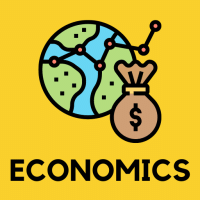Commerce Exam > Commerce Questions > Directions: In the following questions, a st...
Start Learning for Free
Directions: In the following questions, a statement of assertion (A) is followed by a statement of reason (R). Mark the correct choice as:
Assertion (A): Trade policy relates with protection from imports in two forms: tariffs and quotas.
Reason (R): Quotas specify the quality of goods which can be imported.
- a)Both assertion (A) and reason (R) are true and reason (R) is the correct explanation of assertion (A).
- b)Both assertion (A) and reason (R) are true but reason (R) is not the correct explanation of assertion (A).
- c)Assertion (A) is true but reason (R) is false.
- d)Assertion (A) is false but reason (R) is true.
Correct answer is option 'C'. Can you explain this answer?
Most Upvoted Answer
Directions: In the following questions, a statement of assertion (A) ...
Tariffs, import quotas, product standards, and subsidies are some of the primary policy tools a government can use in enacting protectionist policies.
Free Test
| FREE | Start Free Test |
Community Answer
Directions: In the following questions, a statement of assertion (A) ...
Assertion (A): Trade policy relates with protection from imports in two forms: tariffs and quotas.
Reason (R): Quotas specify the quality of goods which can be imported.
Explanation:
The trade policy of a country is a set of rules and regulations that govern its international trade. It includes measures taken by the government to protect domestic industries from foreign competition. Two common forms of trade protection are tariffs and quotas.
Tariffs:
- A tariff is a tax imposed on imported goods. It increases the price of imported goods, making them less competitive compared to domestic products.
- Tariffs are used to protect domestic industries by making imported goods more expensive, thus encouraging consumers to buy domestic products.
- The purpose of imposing tariffs is to restrict the quantity of imports and protect domestic producers from competition.
Quotas:
- A quota is a limit or restriction on the quantity of a specific good that can be imported into a country.
- Quotas specify the quantity or volume of goods that can be imported within a given period.
- The purpose of imposing quotas is to limit the quantity of imports and protect domestic industries from foreign competition.
- Quotas can be set based on the quality, quantity, or value of goods being imported.
Analysis:
The assertion states that trade policy relates to protection from imports through tariffs and quotas. This is true as both tariffs and quotas are measures used by governments to protect domestic industries from foreign competition.
The reason states that quotas specify the quality of goods that can be imported. This is incorrect as quotas do not specify the quality of goods, but rather the quantity or volume of goods that can be imported.
Conclusion:
- The assertion is true as trade policy does relate to protection from imports through tariffs and quotas.
- The reason is false as quotas do not specify the quality of goods that can be imported.
- Therefore, option C is the correct answer.
Reason (R): Quotas specify the quality of goods which can be imported.
Explanation:
The trade policy of a country is a set of rules and regulations that govern its international trade. It includes measures taken by the government to protect domestic industries from foreign competition. Two common forms of trade protection are tariffs and quotas.
Tariffs:
- A tariff is a tax imposed on imported goods. It increases the price of imported goods, making them less competitive compared to domestic products.
- Tariffs are used to protect domestic industries by making imported goods more expensive, thus encouraging consumers to buy domestic products.
- The purpose of imposing tariffs is to restrict the quantity of imports and protect domestic producers from competition.
Quotas:
- A quota is a limit or restriction on the quantity of a specific good that can be imported into a country.
- Quotas specify the quantity or volume of goods that can be imported within a given period.
- The purpose of imposing quotas is to limit the quantity of imports and protect domestic industries from foreign competition.
- Quotas can be set based on the quality, quantity, or value of goods being imported.
Analysis:
The assertion states that trade policy relates to protection from imports through tariffs and quotas. This is true as both tariffs and quotas are measures used by governments to protect domestic industries from foreign competition.
The reason states that quotas specify the quality of goods that can be imported. This is incorrect as quotas do not specify the quality of goods, but rather the quantity or volume of goods that can be imported.
Conclusion:
- The assertion is true as trade policy does relate to protection from imports through tariffs and quotas.
- The reason is false as quotas do not specify the quality of goods that can be imported.
- Therefore, option C is the correct answer.

|
Explore Courses for Commerce exam
|

|
Question Description
Directions: In the following questions, a statement of assertion (A) is followed by a statement of reason (R). Mark the correct choice as:Assertion (A): Trade policy relates with protection from imports in two forms: tariffs and quotas.Reason (R): Quotas specify the quality of goods which can be imported.a)Both assertion (A) and reason (R) are true and reason (R) is the correct explanation of assertion (A).b)Both assertion (A) and reason (R) are true but reason (R) is not the correct explanation of assertion (A).c)Assertion (A) is true but reason (R) is false.d)Assertion (A) is false but reason (R) is true.Correct answer is option 'C'. Can you explain this answer? for Commerce 2025 is part of Commerce preparation. The Question and answers have been prepared according to the Commerce exam syllabus. Information about Directions: In the following questions, a statement of assertion (A) is followed by a statement of reason (R). Mark the correct choice as:Assertion (A): Trade policy relates with protection from imports in two forms: tariffs and quotas.Reason (R): Quotas specify the quality of goods which can be imported.a)Both assertion (A) and reason (R) are true and reason (R) is the correct explanation of assertion (A).b)Both assertion (A) and reason (R) are true but reason (R) is not the correct explanation of assertion (A).c)Assertion (A) is true but reason (R) is false.d)Assertion (A) is false but reason (R) is true.Correct answer is option 'C'. Can you explain this answer? covers all topics & solutions for Commerce 2025 Exam. Find important definitions, questions, meanings, examples, exercises and tests below for Directions: In the following questions, a statement of assertion (A) is followed by a statement of reason (R). Mark the correct choice as:Assertion (A): Trade policy relates with protection from imports in two forms: tariffs and quotas.Reason (R): Quotas specify the quality of goods which can be imported.a)Both assertion (A) and reason (R) are true and reason (R) is the correct explanation of assertion (A).b)Both assertion (A) and reason (R) are true but reason (R) is not the correct explanation of assertion (A).c)Assertion (A) is true but reason (R) is false.d)Assertion (A) is false but reason (R) is true.Correct answer is option 'C'. Can you explain this answer?.
Directions: In the following questions, a statement of assertion (A) is followed by a statement of reason (R). Mark the correct choice as:Assertion (A): Trade policy relates with protection from imports in two forms: tariffs and quotas.Reason (R): Quotas specify the quality of goods which can be imported.a)Both assertion (A) and reason (R) are true and reason (R) is the correct explanation of assertion (A).b)Both assertion (A) and reason (R) are true but reason (R) is not the correct explanation of assertion (A).c)Assertion (A) is true but reason (R) is false.d)Assertion (A) is false but reason (R) is true.Correct answer is option 'C'. Can you explain this answer? for Commerce 2025 is part of Commerce preparation. The Question and answers have been prepared according to the Commerce exam syllabus. Information about Directions: In the following questions, a statement of assertion (A) is followed by a statement of reason (R). Mark the correct choice as:Assertion (A): Trade policy relates with protection from imports in two forms: tariffs and quotas.Reason (R): Quotas specify the quality of goods which can be imported.a)Both assertion (A) and reason (R) are true and reason (R) is the correct explanation of assertion (A).b)Both assertion (A) and reason (R) are true but reason (R) is not the correct explanation of assertion (A).c)Assertion (A) is true but reason (R) is false.d)Assertion (A) is false but reason (R) is true.Correct answer is option 'C'. Can you explain this answer? covers all topics & solutions for Commerce 2025 Exam. Find important definitions, questions, meanings, examples, exercises and tests below for Directions: In the following questions, a statement of assertion (A) is followed by a statement of reason (R). Mark the correct choice as:Assertion (A): Trade policy relates with protection from imports in two forms: tariffs and quotas.Reason (R): Quotas specify the quality of goods which can be imported.a)Both assertion (A) and reason (R) are true and reason (R) is the correct explanation of assertion (A).b)Both assertion (A) and reason (R) are true but reason (R) is not the correct explanation of assertion (A).c)Assertion (A) is true but reason (R) is false.d)Assertion (A) is false but reason (R) is true.Correct answer is option 'C'. Can you explain this answer?.
Solutions for Directions: In the following questions, a statement of assertion (A) is followed by a statement of reason (R). Mark the correct choice as:Assertion (A): Trade policy relates with protection from imports in two forms: tariffs and quotas.Reason (R): Quotas specify the quality of goods which can be imported.a)Both assertion (A) and reason (R) are true and reason (R) is the correct explanation of assertion (A).b)Both assertion (A) and reason (R) are true but reason (R) is not the correct explanation of assertion (A).c)Assertion (A) is true but reason (R) is false.d)Assertion (A) is false but reason (R) is true.Correct answer is option 'C'. Can you explain this answer? in English & in Hindi are available as part of our courses for Commerce.
Download more important topics, notes, lectures and mock test series for Commerce Exam by signing up for free.
Here you can find the meaning of Directions: In the following questions, a statement of assertion (A) is followed by a statement of reason (R). Mark the correct choice as:Assertion (A): Trade policy relates with protection from imports in two forms: tariffs and quotas.Reason (R): Quotas specify the quality of goods which can be imported.a)Both assertion (A) and reason (R) are true and reason (R) is the correct explanation of assertion (A).b)Both assertion (A) and reason (R) are true but reason (R) is not the correct explanation of assertion (A).c)Assertion (A) is true but reason (R) is false.d)Assertion (A) is false but reason (R) is true.Correct answer is option 'C'. Can you explain this answer? defined & explained in the simplest way possible. Besides giving the explanation of
Directions: In the following questions, a statement of assertion (A) is followed by a statement of reason (R). Mark the correct choice as:Assertion (A): Trade policy relates with protection from imports in two forms: tariffs and quotas.Reason (R): Quotas specify the quality of goods which can be imported.a)Both assertion (A) and reason (R) are true and reason (R) is the correct explanation of assertion (A).b)Both assertion (A) and reason (R) are true but reason (R) is not the correct explanation of assertion (A).c)Assertion (A) is true but reason (R) is false.d)Assertion (A) is false but reason (R) is true.Correct answer is option 'C'. Can you explain this answer?, a detailed solution for Directions: In the following questions, a statement of assertion (A) is followed by a statement of reason (R). Mark the correct choice as:Assertion (A): Trade policy relates with protection from imports in two forms: tariffs and quotas.Reason (R): Quotas specify the quality of goods which can be imported.a)Both assertion (A) and reason (R) are true and reason (R) is the correct explanation of assertion (A).b)Both assertion (A) and reason (R) are true but reason (R) is not the correct explanation of assertion (A).c)Assertion (A) is true but reason (R) is false.d)Assertion (A) is false but reason (R) is true.Correct answer is option 'C'. Can you explain this answer? has been provided alongside types of Directions: In the following questions, a statement of assertion (A) is followed by a statement of reason (R). Mark the correct choice as:Assertion (A): Trade policy relates with protection from imports in two forms: tariffs and quotas.Reason (R): Quotas specify the quality of goods which can be imported.a)Both assertion (A) and reason (R) are true and reason (R) is the correct explanation of assertion (A).b)Both assertion (A) and reason (R) are true but reason (R) is not the correct explanation of assertion (A).c)Assertion (A) is true but reason (R) is false.d)Assertion (A) is false but reason (R) is true.Correct answer is option 'C'. Can you explain this answer? theory, EduRev gives you an
ample number of questions to practice Directions: In the following questions, a statement of assertion (A) is followed by a statement of reason (R). Mark the correct choice as:Assertion (A): Trade policy relates with protection from imports in two forms: tariffs and quotas.Reason (R): Quotas specify the quality of goods which can be imported.a)Both assertion (A) and reason (R) are true and reason (R) is the correct explanation of assertion (A).b)Both assertion (A) and reason (R) are true but reason (R) is not the correct explanation of assertion (A).c)Assertion (A) is true but reason (R) is false.d)Assertion (A) is false but reason (R) is true.Correct answer is option 'C'. Can you explain this answer? tests, examples and also practice Commerce tests.

|
Explore Courses for Commerce exam
|

|
Signup for Free!
Signup to see your scores go up within 7 days! Learn & Practice with 1000+ FREE Notes, Videos & Tests.


















